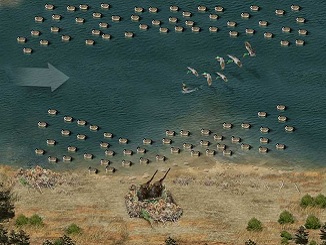 If ducks and geese in your area have learned to recognize traditional decoy spread configurations, it’s time to leave complacency behind and invent a new decoy strategy. The following decoy spreads were devised by savvy waterfowl hunters to create a unique look in specific habitats to appeal to even the wariest birds.
If ducks and geese in your area have learned to recognize traditional decoy spread configurations, it’s time to leave complacency behind and invent a new decoy strategy. The following decoy spreads were devised by savvy waterfowl hunters to create a unique look in specific habitats to appeal to even the wariest birds.
Set a Long-Shot Goose Spread
Field Hudnall, past world goose calling champion and co-host of DU TV, hunts the Ohio River near his hometown of La Grange, Kentucky. When the birds become decoy-shy in his area, Hudnall sets an all-Canada goose spread for ducks.
“We use all Canada goose decoys because of their size and visibility,” Hudnall says. “After years of hunting the river, we’ve learned that ducks like goose decoys, but geese don’t like duck decoys. With this spread we can decoy geese if they come by, but our primary target is ducks. And it works.”
Hudnall and his hunting partners set half of their 100-plus Canada goose floaters against the shoreline. He prefers to use “rester” decoys in this part of the spread to look like a relaxed flock. He packs these decoys in tightly, typically within 15 to 20 yards of his blind. Hudnall sets the other half of his spread more than 50 yards beyond the first group of decoys, as far out in the river as he can. This creates two decoy masses with a 20-yard gap between them for a landing zone. With the wind blowing parallel to the river, ducks see the two groups of decoys and work right into the open water between them.
“This decoy spread is unusual because we put half of the decoys outside shooting range,” Hudnall explains. “The idea is to get the birds’ attention with large numbers of decoys, and then offer a landing zone within shooting range.”
Continue read at DU this very informative article with great illustrations to help you next hunt successful. – http://www.ducks.org/Hunting/Decoys/Ridiculously-Smart-Decoy-Strategies?poe=decoysHome
